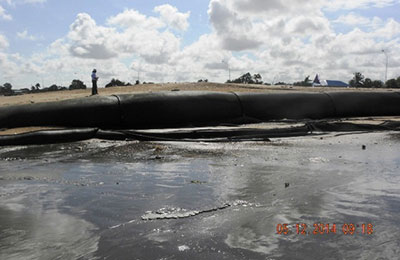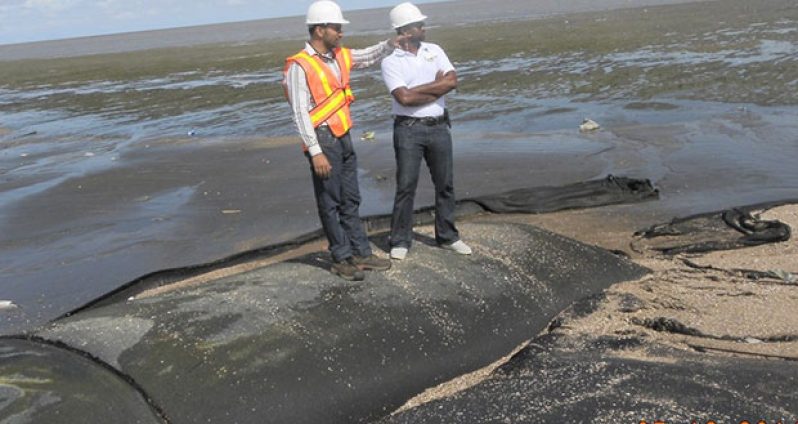POST-INSTALLATION surveys carried out on the geotextile tubes along the Kingston/Kitty seawall have indicated that the shoreline has improved with much wider foreshore areas being created.
Over a three-month period – April to July – the Ministry of Public Works installed six tubes to form a groyne field. The project is an initiative under the 2014 Sea Defence Programme.

Amitab Babulal, one of the ministry’s Sea Defence Engineers who executed the project, stated that over the past few months there have been significant sand deposition recorded on the foreshore area.
“The geotextile tubes have contributed to beach stabilisation and the retention of shell/sand/sediment drifting in the westerly direction. In recent years, the sediments have been moving towards the Demerara River channel, which would pose a challenge to marine/maritime businesses and operators,” Mr. Babulal explained.
Due to the success of the beach material retention, the ministry is identifying other vulnerable sites to replicate the exercise.
According to Jermaine Braithwaite, a MPWs Senior Engineer, geotextile tubes contribute to long-term shoreline management and promoting sustainable protection of the shoreline.
“Parts of Guyana’s shorelines have experienced erosion and overtopping due to the impact of high- energy waves, and we have a rapid installation method that could help mitigate these adverse effects,” he added.
Areas under consideration include No. 63 Beach, sites on Leguan and Devonshire Castle, Essequibo Coast.
Scope of works
The works entail the installation of three geotextile tube (geotube) groynes of length 100m and circumference 6.4m wide. Each groyne was constructed by sand-filling two 50m long geotextile tubes which were installed with a butt joint interface to form a continuous unit along the design alignment for each groyne.
Mr. Babulal also noted that the tubes have minimum impact on the environment and the levels of maintenance required are low.
“Geotube structures are also a cost-effective alternative when compared to traditional marine materials and methods. They are fabricated from a high–strength, specially engineered, woven textile with special high-strength seaming techniques to resist pressures during pumping operations,” he added.



.jpg)








